Hands-on Solutions: How to Choose Work Gloves for Every Task

Choosing the right work gloves is crucial for safety and efficiency across all industries, from construction and healthcare to agriculture and manufacturing. Work gloves not only protect against hazards like cuts, abrasions, chemical exposures, and thermal risks but also enhance performance by providing the necessary grip, comfort, and dexterity.
This guide simplifies the complex process of selecting work gloves, highlighting the diversity available and the key considerations for making informed choices. By understanding the specific needs of different tasks and environments, individuals and organisations can ensure both the safety of workers and the quality of work.
Assessing Your Work Environment
Before selecting work gloves, it's crucial to assess your work environment to identify the specific hazards and requirements of your tasks. This assessment ensures that the gloves you choose will offer the protection and performance necessary for your specific situation.
Identifying Environmental and Task-Specific Hazards
Temperature, Moisture, and Physical Risks: The first step is to consider the environmental conditions. Are you working in extreme temperatures, dealing with high moisture levels, or being exposed to sharp objects and machinery? For instance, cold storage work requires gloves that offer insulation, while tasks involving water or other liquids need gloves that provide waterproof protection. Similarly, handling sharp materials necessitates cut-resistant gloves to prevent injuries.
Ergonomic Considerations for Enhanced Performance
Ergonomics play a significant role in glove selection. The right gloves not only protect but also enhance the wearer's ability to perform tasks comfortably and effectively. Gloves that are too bulky may hinder fine motor skills, while those that are too tight can restrict blood flow and cause fatigue. Therefore, it's essential to choose gloves that offer the right balance of protection and flexibility, allowing for natural movement and preventing strain over long periods of use.
Importance of Proper Glove Sizing for Efficiency and Comfort
Proper glove sizing is paramount for both safety and comfort. Ill-fitting gloves can greatly impede efficiency and increase the risk of accidents. Gloves that are too large can slip off or make handling tools and materials cumbersome, while too-small gloves can cause discomfort and reduce dexterity. To ensure optimal performance and protection, measure your hands according to the manufacturer's sizing chart and consider any specific needs of your tasks, such as the need for additional padding or tactile sensitivity.
In summary, a thorough assessment of your work environment, focusing on the specific hazards, ergonomic needs, and sizing requirements, is essential for selecting work gloves that will provide the best balance of protection, performance, and comfort. This proactive approach not only safeguards against potential injuries but also enhances overall productivity and job satisfaction.
Exploring Types of Work Gloves
The right work gloves can significantly impact safety and efficiency, providing protection against specific hazards while ensuring that the wearer can perform tasks effectively. Below, we delve into various types of work gloves, highlighting their key features, safety standards, and use cases.
Grip Gloves: Ensuring Dexterity and Protection
Grip gloves are essential for tasks requiring precision and control, particularly in wet conditions where regular gloves may slip or reduce dexterity. These gloves are designed to provide excellent grip without sacrificing the necessary protection, making them ideal for a wide range of applications, from construction to automotive work.
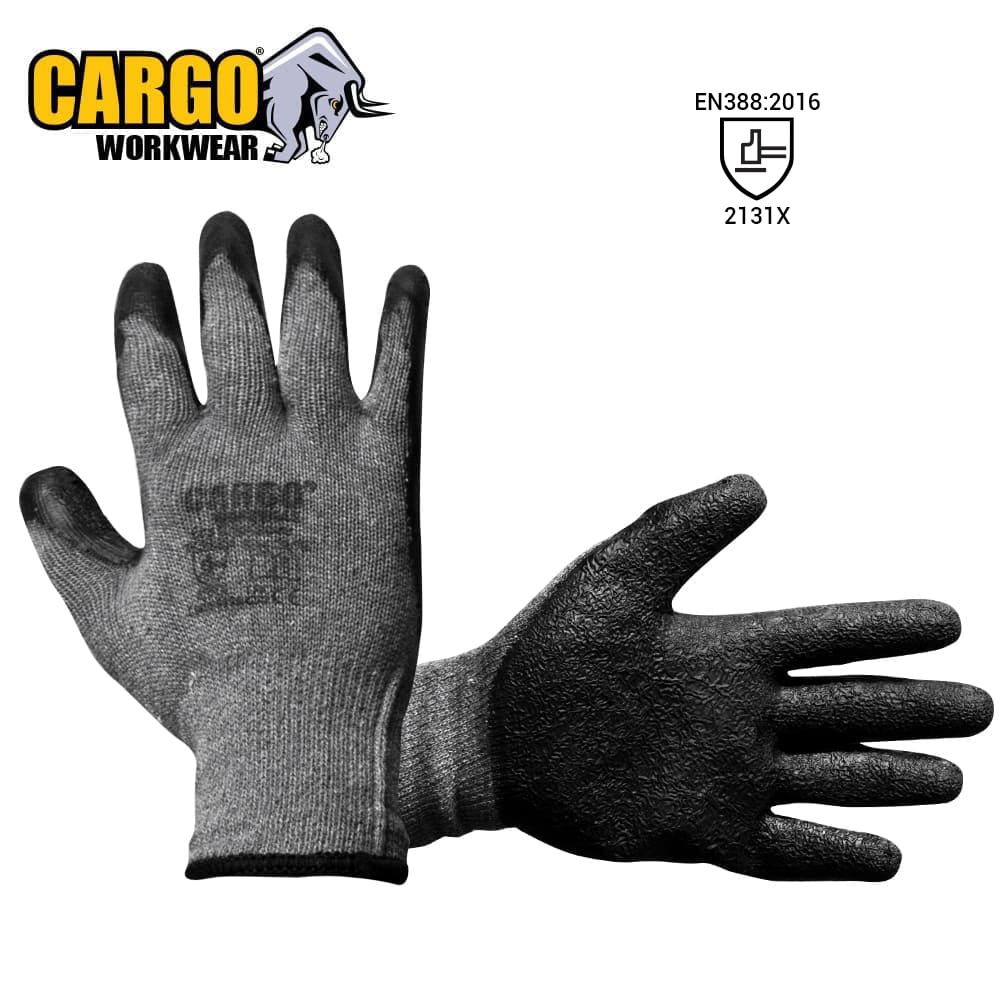 |
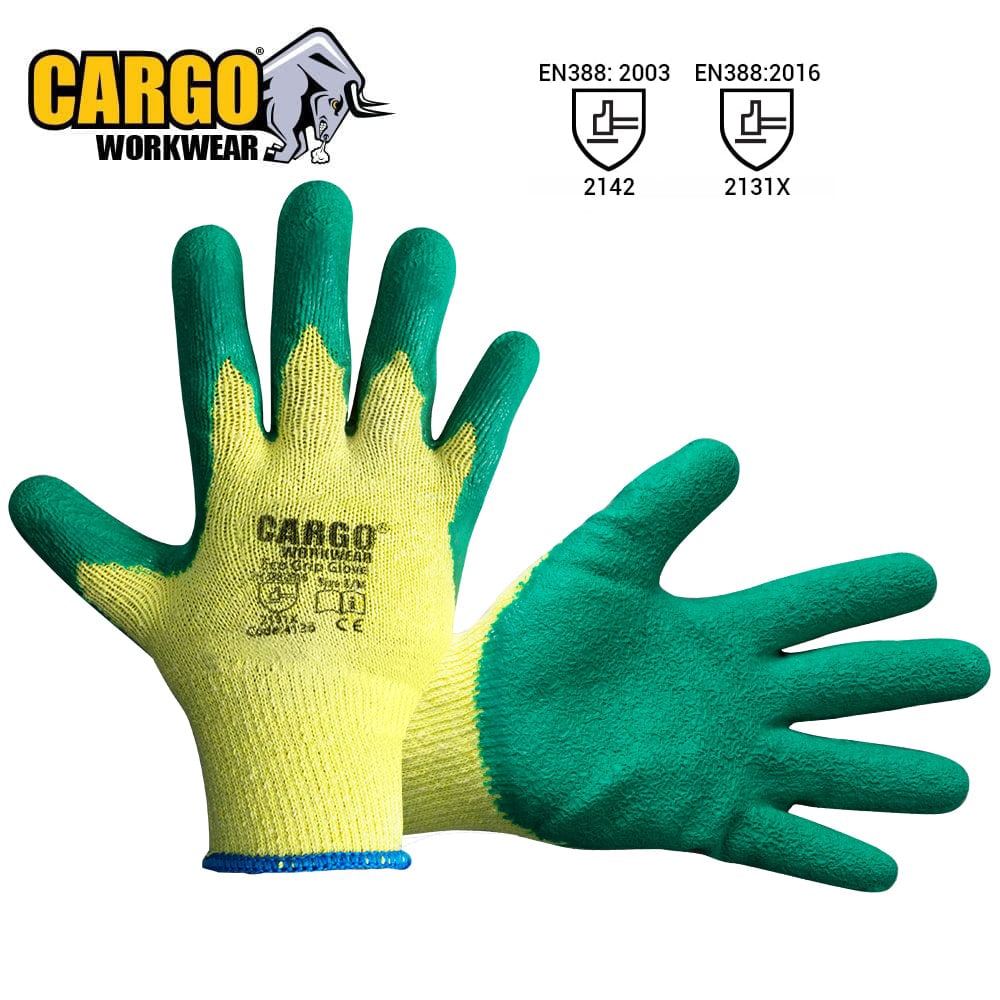 |
| Cargo Eco Grip Glove | Cargo Green Grip Glove |
Cut-Resistant Gloves: Key Features and Safety Standards
Cut-resistant gloves are crucial for protecting hands from lacerations and cuts, especially in industries involving sharp tools and materials. These gloves are regulated under the EN388 safety standard, which grades the level of protection they offer against mechanical hazards. Made with reinforced layers of special yarn, Kevlar, or stainless steel, cut-resistant gloves provide robust protection while maintaining flexibility and comfort.
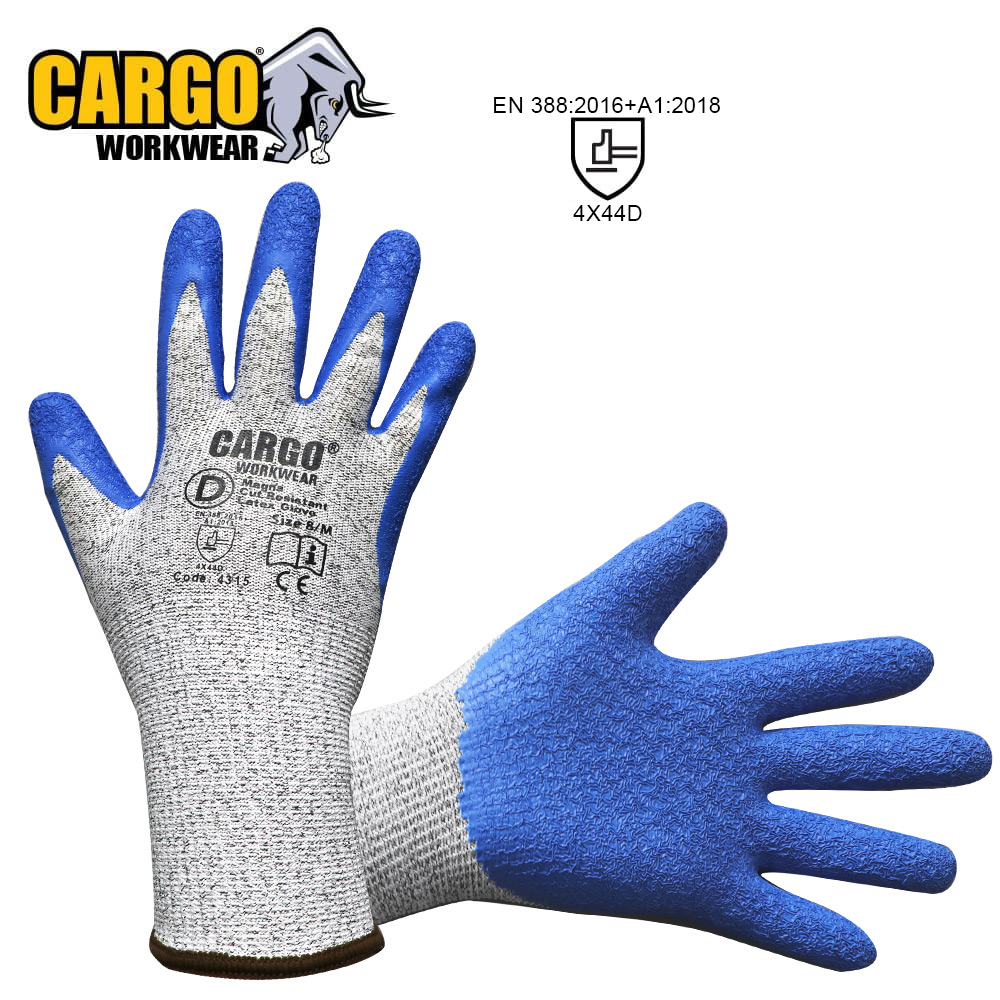 |
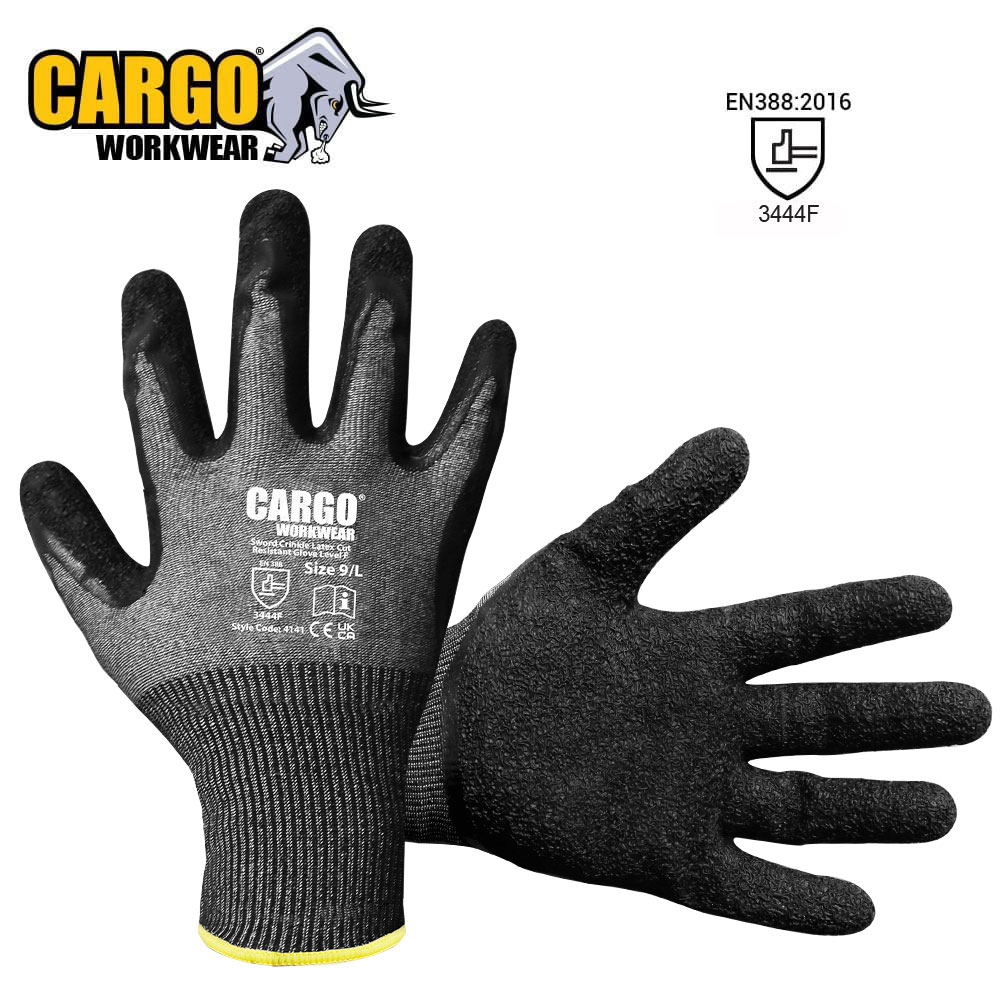 |
| Cargo Magna Cut 5/D Latex Crinkle Palm Glove 4X44D Ext Cuff | Cargo Sword Cut/F Latex Crinkle Glove 3444F Ext Cuff |
Chemical-Resistant Gloves: Material Selection for Optimal Protection
To safeguard against hazardous chemical exposures, chemical-resistant gloves are made from various materials, each selected for its resistance to different chemicals. Nitrile, latex, PVC, and neoprene rubber are among the common materials used, offering protection tailored to specific chemical hazards encountered in the workplace.
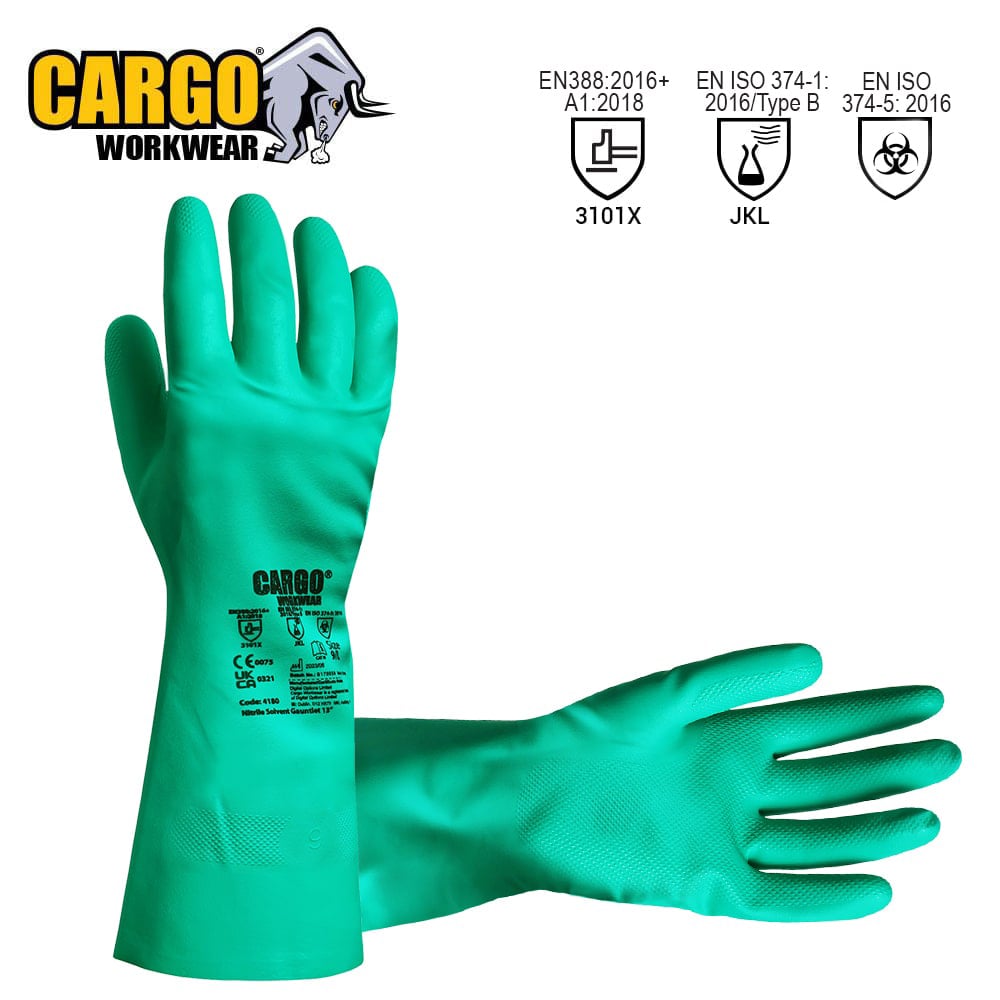 |
 |
| Cargo Nitrile Solvent Open Top Gauntlet 13" | Cargo Actifresh PVC Double Dip Glove 11" |
Heat-Resistant Gloves: Selection Criteria and Use Cases
For tasks involving high temperatures and flames, heat-resistant gloves are indispensable. Complying with the EN407 safety standard, these gloves are made from materials capable of withstanding extreme heat. This category includes specialised gloves like welder's gloves, gauntlets for TIG and MIG welding, and hot gloves used in the food industry, providing protection across a range of heat-intensive applications.
 |
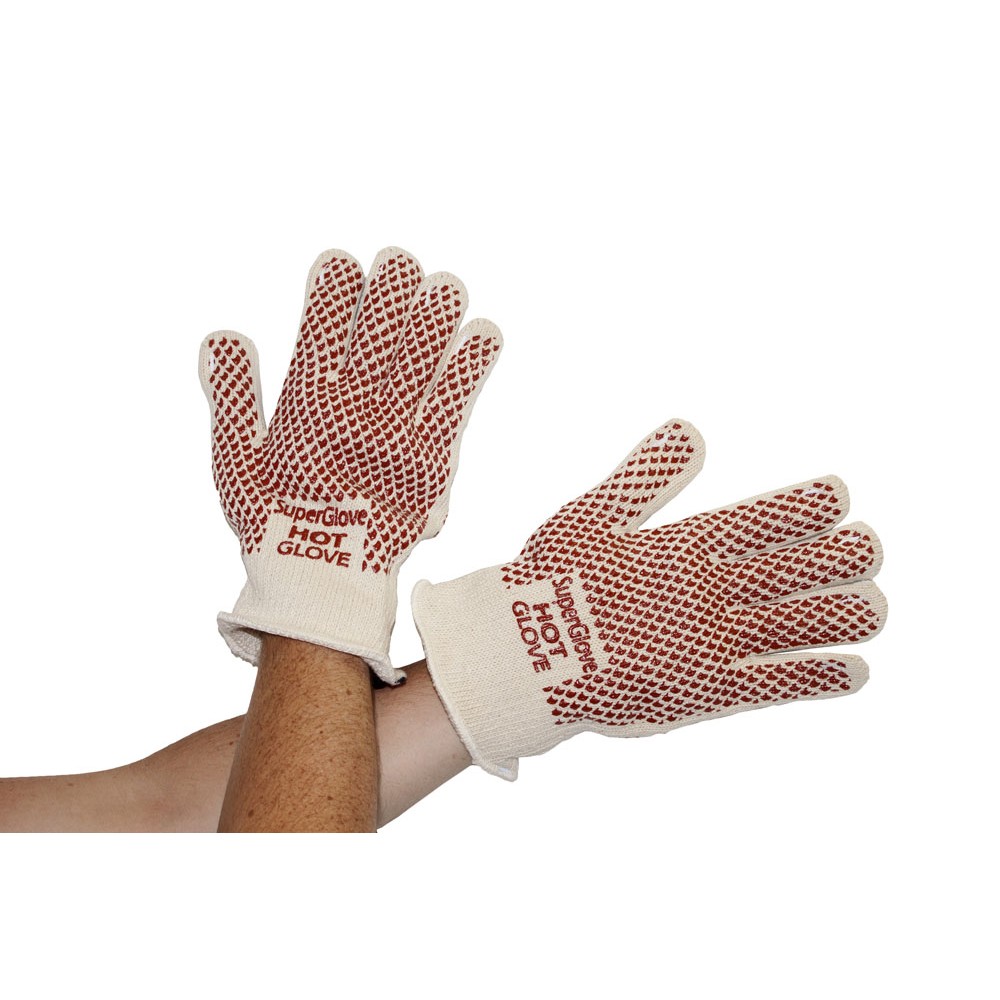 |
| Welders Gauntlet | Grip N'Hot Mill Glove |
Cold-Insulating Gloves: Features for Cold Environment Adaptation
Designed for work in cold environments, cold-insulating gloves offer protection against various cold temperatures. Suitable for outdoor work, handling in freezers or refrigerators, and dealing with cryogenic materials, these gloves ensure hands remain warm and functional, preventing frostbite and enhancing grip in cold conditions.
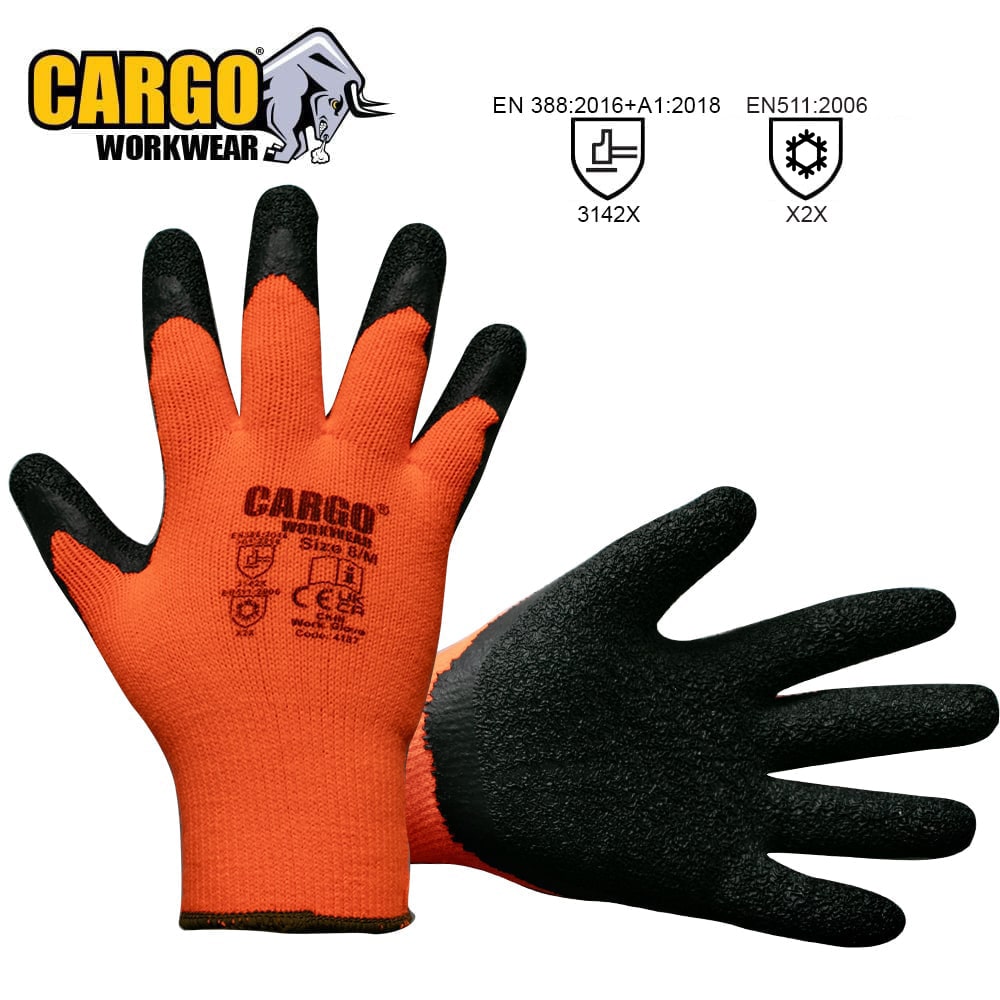 |
 |
| Cargo Chill Work Glove | Cargo Winter Snap Glove |
Leather Rigger Gloves: Combining Durability with Comfort
Leather rigger gloves, known for their durability and comfort, are made from a combination of cow-split leather and cotton. Originally designed for oil rig workers, their versatility and hardwearing nature have made them popular across a broad range of industries. These gloves are ideal for prolonged use, providing excellent protection and comfort.
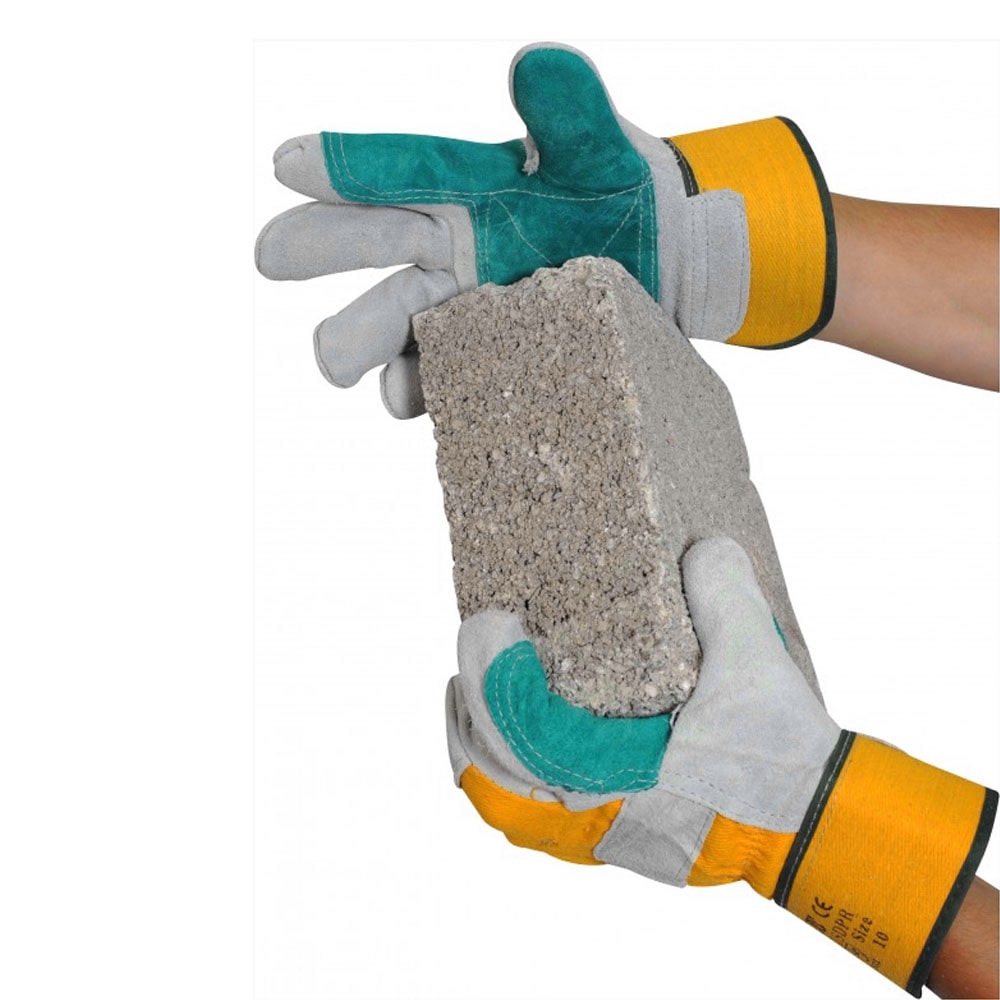 |
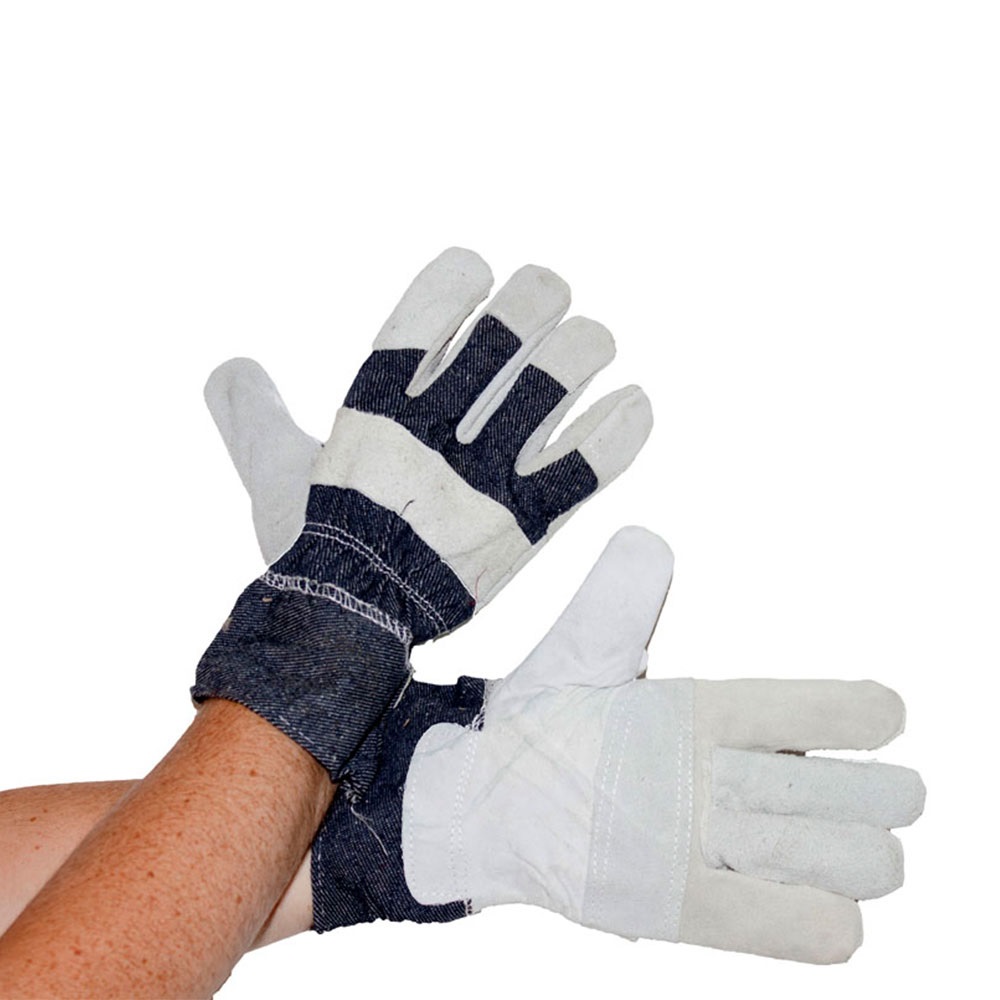 |
| Heavy Duty Double Palm Rigger Glove | Cow Split Canadian Rigger Glove |
Mechanical Gloves: Customised Protection for Mechanical Tasks
Mechanical gloves offer specialised protection from mechanical hazards, including impacts to knuckles and fingers, as well as from harmful vibrations that can lead to conditions like Vibration Syndrome. Features like anti-vibration padding and reinforced areas cater to specific risks associated with mechanical work, ensuring both safety and functionality.
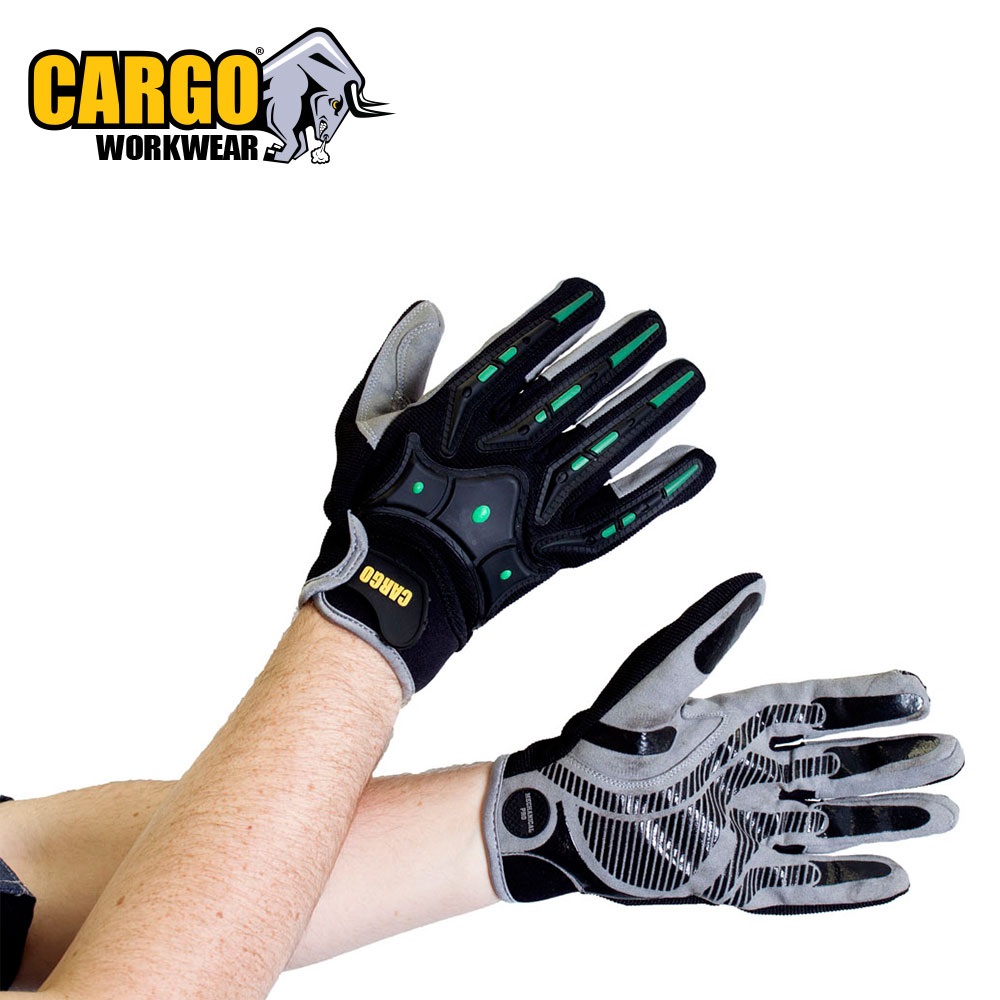 |
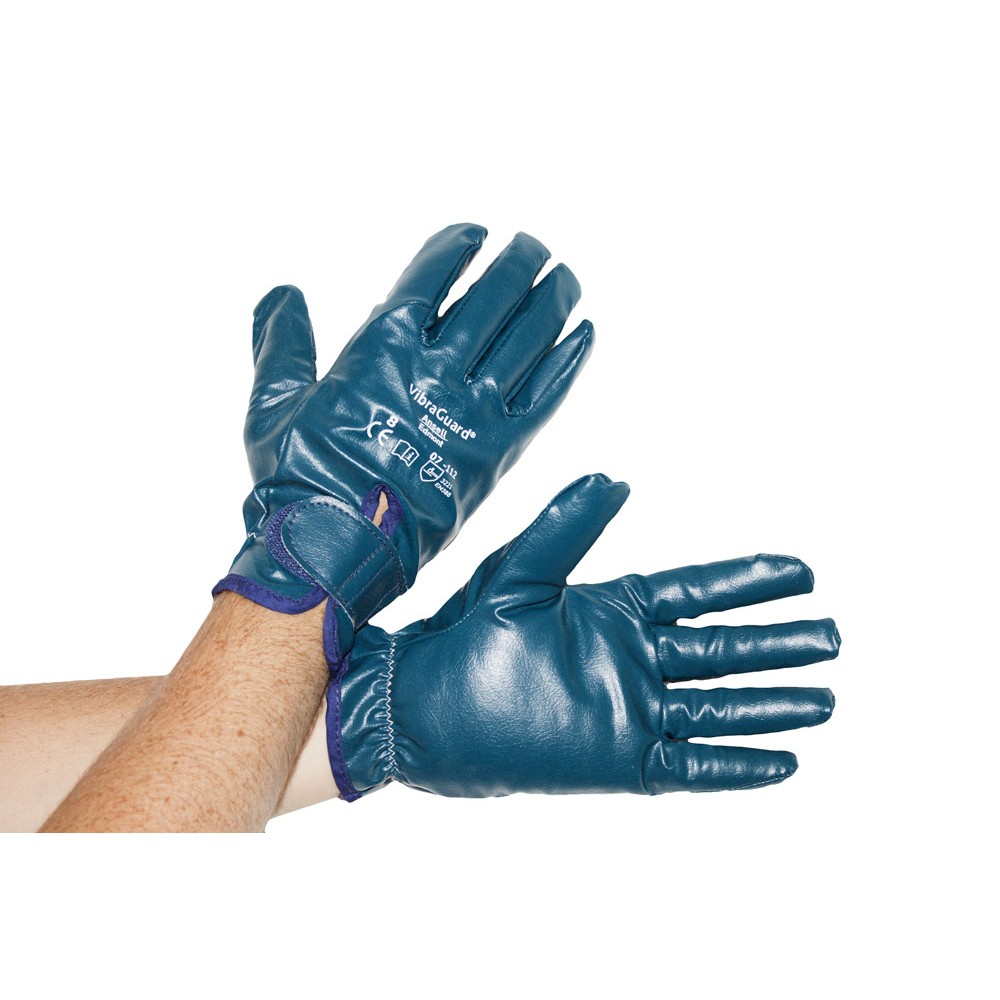 |
| Cargo Pro Mechanic's Glove | Vibra Guard Anti-Vibration Glove |
Disposable Gloves: Choosing the Right Type for Industry-Specific Needs
Disposable gloves are suited for a wide array of industries, offering convenience and hygiene for tasks requiring frequent glove changes. Available in nitrile, vinyl, and latex, these gloves comply with safety standards such as EN455 (medical grade), EN1186 (food safe), and EN374 (chemical protection), ensuring suitability for various applications from healthcare to food service and chemical handling.
 |
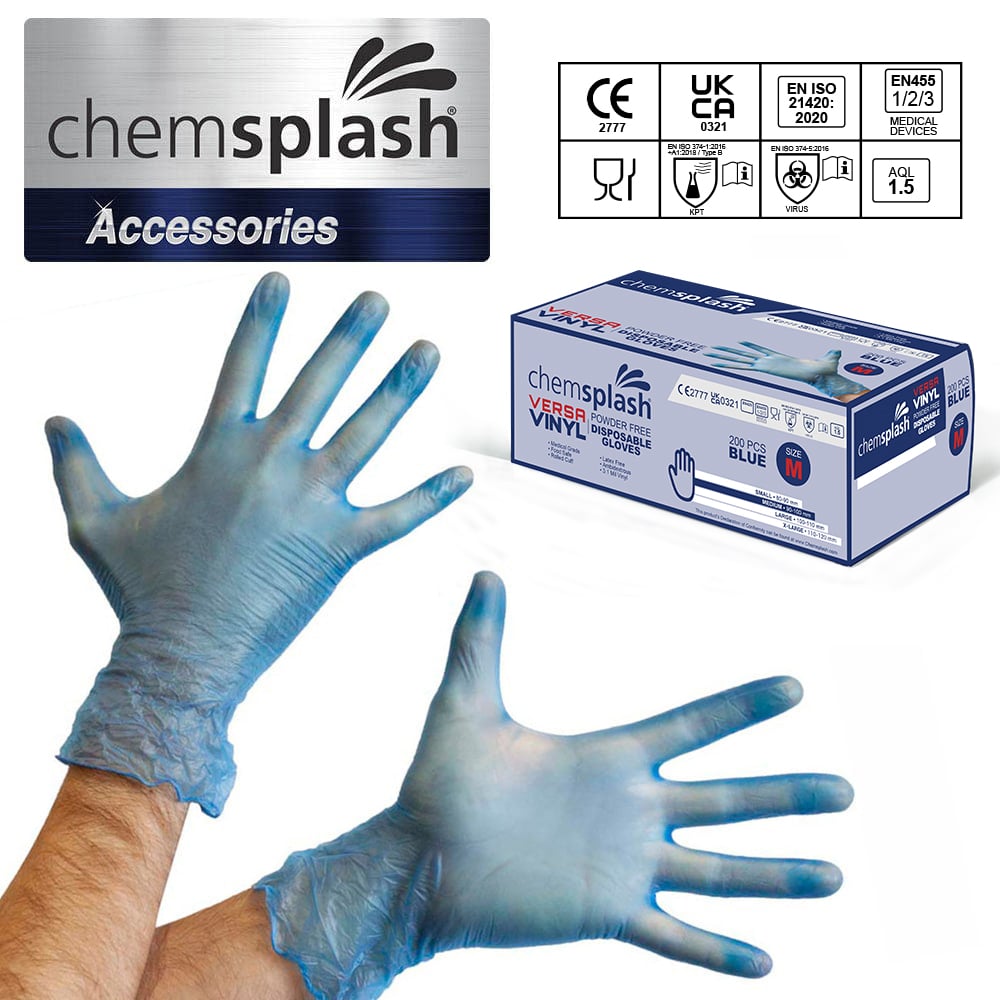 |
| Chemsplash Multi-Task Nitrile Powder Free Disposable Gloves | Chemsplash Versa Vinyl Powder Free Disposable Gloves |
Selecting the appropriate type of work glove is a critical step in ensuring worker safety and operational efficiency. By understanding the unique features and applications of each glove type, users can make informed decisions tailored to their specific needs.
Selecting Gloves Based on Task Requirements
Choosing the right work gloves involves understanding the specific demands of your industry and tasks. This section provides recommendations and practical tips for selecting gloves that match the unique requirements of various fields, including construction, healthcare, manufacturing and food service industry.
Construction
In the construction industry, where the environment is fraught with hazards ranging from sharp objects to heavy machinery, the choice of gloves can significantly impact worker safety and efficiency.
- Leather rigger gloves are particularly valued for their rugged durability and comfort, making them an excellent choice for a wide range of tasks, including material handling and machine operation. They provide the necessary protection against abrasions and minor cuts while ensuring the wearer's comfort throughout the day.
- For higher-risk tasks that involve direct contact with sharp materials, cut-resistant gloves offer an additional level of safety. These gloves are engineered with materials like Kevlar or steel fibres, providing superior protection without compromising on flexibility or dexterity.
- Grip gloves are another essential type for construction workers, especially for tasks that require precise handling of tools and materials in slippery conditions. Their specialized coatings enhance grip strength, ensuring that tasks are performed safely and efficiently.
Recommended Work Gloves Type: Leather Rigger Gloves, Cut-Resistant Gloves, Grip Gloves
Healthcare
Healthcare environments demand gloves that offer robust protection against biological and chemical hazards while enabling precise patient care. Disposable gloves made from nitrile are the go-to choice in this sector due to their excellent barrier protection, resistance to a wide range of chemicals, and puncture-resistant properties.
These gloves are latex-free, addressing allergy concerns, and meet EN455 (medical grade) standards, ensuring they are suitable for a variety of healthcare tasks, from patient examination to handling biohazardous materials.
Their design prioritises both safety and tactile sensitivity, essential for procedures requiring fine motor skills, such as suturing wounds or administering injections. In healthcare settings, the use of disposable gloves is also critical for maintaining hygiene standards and preventing cross-contamination.
Recommended Work Gloves Type: Disposable Medical Grade Nitrile Gloves
Manufacturing
The manufacturing sector encompasses a wide range of activities, each with its specific safety requirements and hazards, including exposure to machinery, chemicals, and extreme temperatures.
Mechanical gloves are particularly beneficial in this setting, designed to protect against impacts and vibrations that are common in heavy machinery operations. They often feature reinforced padding and offer dexterity, allowing workers to perform their tasks safely and efficiently.
For roles involving chemical processing or exposure, chemical-resistant gloves provide the necessary protection. These gloves are made from materials like nitrile or neoprene, chosen for their resistance to various chemicals.
Heat-resistant gloves are also crucial in manufacturing settings where workers are exposed to high temperatures. These gloves are made from materials that can withstand extreme heat, ensuring worker safety during tasks like metalworking or glass manufacturing.
Recommended Work Gloves Type: Mechanical Gloves, Chemical-Resistant Gloves, Heat-Resistant Gloves
Food Service
In the food service industry, gloves serve two primary purposes: protecting the wearer from kitchen hazards such as cuts and burns, and preventing food contamination. Disposable gloves, compliant with EN1186 (food safe) standards, are essential for maintaining hygiene and safety in food handling.
- Nitrile gloves are preferred for their durability, resistance to punctures, and lack of allergenic proteins, making them suitable for both food preparation and cleaning tasks.
- Vinyl gloves offer a cost-effective alternative for tasks requiring less durability and are also latex-free, minimising the risk of allergic reactions. These gloves are ideal for short-duration tasks that require frequent glove changes, such as serving food or handling raw ingredients.
Recommended Work Gloves Type: Disposable Nitrile Gloves, Disposable Vinyl Gloves
Each of these industries presents unique challenges that require specific types of work gloves for optimal protection and performance. By selecting the appropriate gloves for their specific needs, workers can ensure their safety and enhance their efficiency, regardless of their industry or task.
Practical Tips for Matching Glove Features with Task Demands
- Assess the Hazards: Identify the primary risks of your task, whether they're cuts, chemicals, heat, or cold. This will narrow down your glove options.
- Consider the Material: Choose glove materials that are best suited for protection against the identified hazards. For example, nitrile gloves for chemical resistance or Kevlar gloves for cut resistance.
- Evaluate Dexterity Needs: Ensure the gloves allow for the level of dexterity your task requires. Tasks requiring fine motor skills will benefit from gloves with high tactile sensitivity.
- Check for Standards Compliance: Verify that the gloves meet relevant safety standards for your industry, such as EN388 for mechanical hazards or EN407 for thermal risks.
- Prioritize Comfort and Fit: Select gloves that fit well and are comfortable to wear for long periods, as improper fit can lead to hand fatigue or compromise safety.
- Consider Environmental Conditions: For outdoor work or tasks in variable temperatures, choose gloves with appropriate insulation or breathability features.
By carefully considering these factors, you can select work gloves that not only protect against specific hazards but also enhance task performance. The right gloves can significantly impact safety, productivity, and comfort, making informed selection a critical component of workplace safety protocols.
Work Glove Maintenance for Extended Use
Proper maintenance of work gloves is essential to extend their lifespan and ensure they continue to provide the necessary level of protection and functionality. Different glove materials require different care methods, and regular inspection is crucial to identify when gloves need to be repaired or replaced. Here are some cleaning, storage, and care tips, along with guidelines for regular inspection and adjustments that can enhance glove functionality.
Cleaning, Storage, and Care Tips for Different Glove Materials
- Leather Gloves: Clean with a damp cloth and mild soap. Allow to air dry away from direct heat sources to prevent the leather from becoming brittle. Condition the leather periodically to keep it supple and extend glove life.
- Rubber and Latex Gloves: Rinse in clean water after use, especially if exposed to chemicals. Store in a cool, dry place away from sunlight and ozone sources like electric motors, which can degrade the material.
- Cut-Resistant and Grip Gloves: Most of these gloves are machine washable, but check the manufacturer's instructions. Avoid using bleach or fabric softeners, as they can weaken the fibres. Dry on a low heat setting or air dry.
- Disposable Gloves: These gloves are not designed for multiple uses. Discard them after use or if they show any sign of wear, tear, or contamination.
Guidelines for Regular Inspection and When to Replace Gloves
Regular inspection of work gloves is vital to ensure they continue to provide adequate protection. Check for signs of wear and tear such as holes, tears, fraying, and embedded particles that could compromise the glove's integrity. Also, look for signs of chemical degradation, such as stiffening, cracking, or discolouration.
Gloves should be replaced:
- Immediately if they are damaged or contaminated beyond cleaning
- If they no longer fit properly or comfortably
- When they show signs of significant wear that could impair their protective capabilities
Adjustments and Accessories for Enhanced Glove Functionality
- Glove Liners: Consider using glove liners for additional warmth in cold environments or to enhance comfort for sensitive skin. Liners can also extend the life of your gloves by absorbing sweat and reducing wear from the inside.
- Glove Guards or Clips: Use glove guards or clips to keep gloves together and attached to your work gear when not in use, preventing loss and ensuring gloves are readily available when needed.
- Anti-Vibration Inserts: For gloves that do not inherently protect against vibration, consider using anti-vibration inserts or pads that can be placed inside the gloves to reduce the risk of vibration-induced injuries.
Proper maintenance, regular inspection, and timely replacement of work gloves are crucial practices that not only extend the life of the gloves but also ensure the safety and productivity of the wearer. By adhering to these guidelines and making necessary adjustments, workers can maintain optimal hand protection and functionality across a wide range of tasks and conditions.
Conclusion
Choosing the right work gloves is a vital decision that significantly impacts the safety, efficiency, and comfort of workers across a myriad of industries. From construction and healthcare to manufacturing and food service, the right gloves protect against a wide range of hazards while enhancing task performance. This guide has provided a comprehensive overview of how to assess work environments, identify specific risks, and select the appropriate gloves based on task requirements.
Proper glove selection is not just about protection; it's about ensuring a seamless integration of safety and functionality, allowing workers to perform their best while minimising the risk of injury. With the guidance provided, individuals and organisations can make informed choices, selecting gloves that offer the right balance of protection, dexterity, and comfort suited to their specific needs.
We encourage you to explore the Work Gloves range of Workwear Experts. With our wide selection of glove types, you're sure to find the perfect fit for every task and industry. Whether you need cut-resistant gloves for construction, disposable gloves for healthcare, or any other type of work glove, we have the solutions to keep your hands protected and your work uninterrupted.
Investing in the right work gloves is investing in your safety and productivity. Explore our range today and equip yourself with the tools you need to tackle every task with confidence and protection.
Your email address cannot be published. Required fields are marked*
